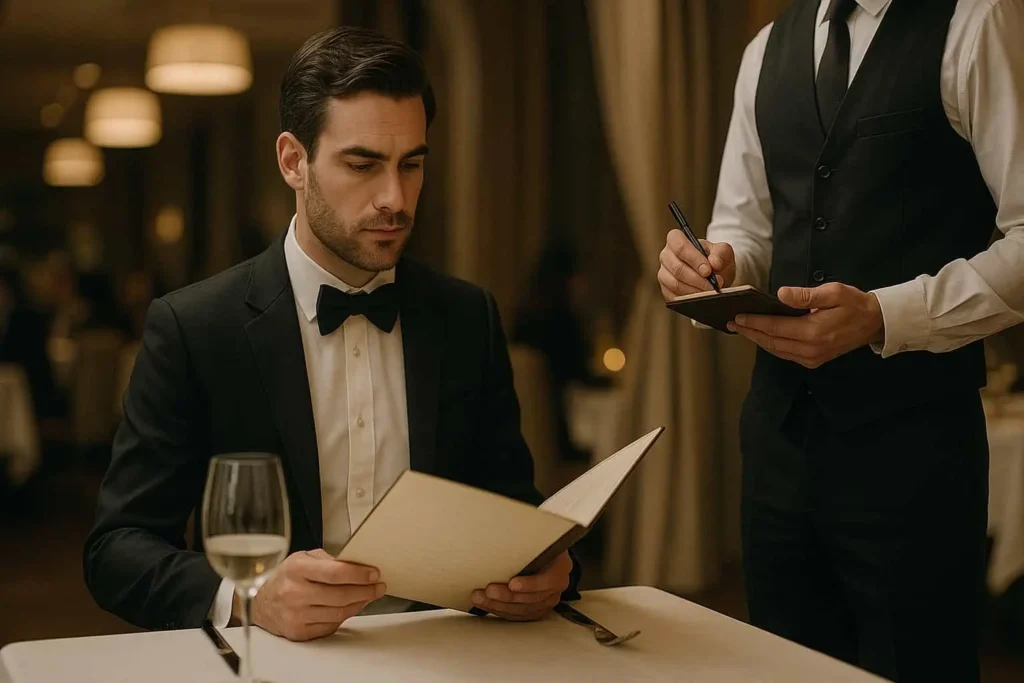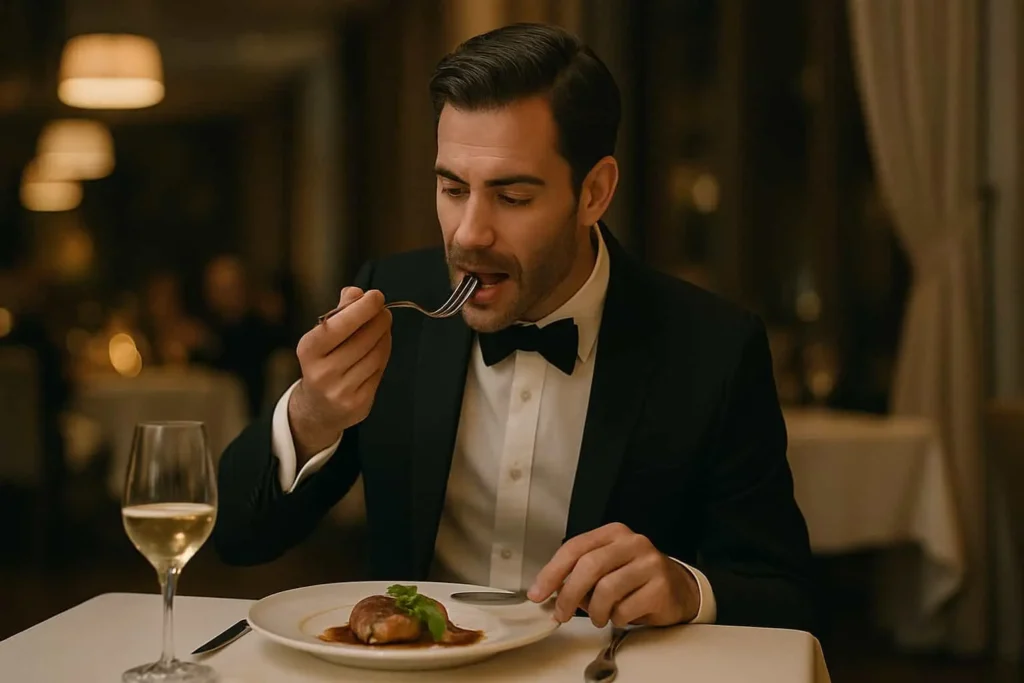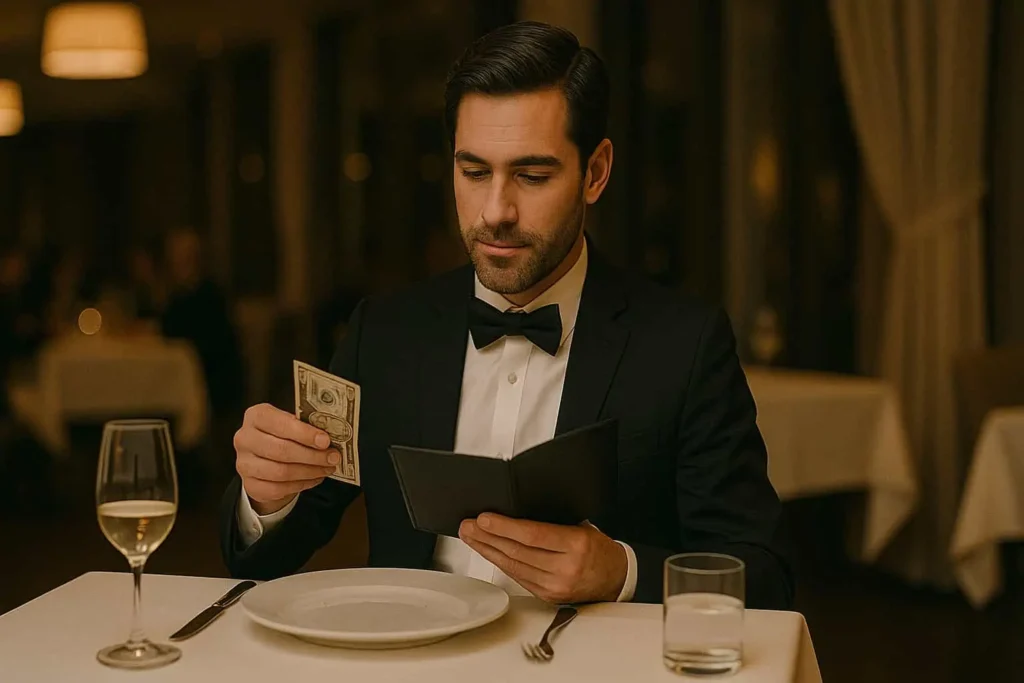Fine Dining Etiquette: A Guide to Dining with Confidence and Class
Dining out at a fine restaurant isn’t just about the food: it’s an experience. Whether you’re on a date, attending a formal event, or just treating yourself, knowing how to carry yourself at a fine dining establishment matters. This guide to fine dining etiquette will help you feel confident navigating any upscale restaurant like a pro.
What is Fine Dining?
Fine dining refers to a more elegant and upscale restaurant experience. These restaurants focus not just on high-quality food, but also on ambiance, service, and presentation. You’ll usually find a set of expected behaviors. Some unwritten, some clearly stated, that help maintain a refined atmosphere for all guests.
The Origin of Fine Dining
Fine dining has roots in 18th-century French aristocracy. The concept quickly spread across Europe and into the world, where it became a marker of luxury and prestige. Over time, it evolved to emphasize the entire dining experience, not just the meal, but the environment and etiquette.
The French influence brought about the idea of a structured dining setup, complete with multiple courses, specific utensils for each dish, and servers trained in formal hospitality. Over time, these traditions were adopted globally and tailored to fit local cultures while maintaining the core principle of elegance.
Fine Dining Today
Today, fine dining blends traditional elegance with modern flair. While fine dining etiquettes have relaxed a bit, etiquette still plays a big role. Upscale restaurants expect guests to follow certain norms to preserve the ambiance.
Menus are often curated by seasoned chefs, featuring seasonal and gourmet ingredients. Presentation is artful, and service is personalized. Fine dining in Islamabad, for instance, also caters to diverse dietary needs, offering vegan, gluten-free, and halal options without compromising on quality.
Why Fine Dining Etiquette Matters
Good manners show respect, not just for the people around you, but also for the restaurant’s efforts to create an exceptional experience. Knowing the right fine dining etiquette will help you relax and enjoy your meal without second-guessing yourself.
Etiquette reflects personal grooming and social awareness. When you understand how to behave in a refined environment, it enhances your confidence and allows everyone at the table to feel comfortable. In formal settings like business dinners, luxury events, or romantic dinners in Islamabad, etiquette becomes a silent ambassador of your personality.
Preparing for the Evening
Your fine dining experience starts well before you walk through the door.

01. Making and Managing Reservations
Always book your table in advance. Fine dining restaurants often have limited seating, and walk-ins may not be accommodated. Confirm your reservation a day before and arrive on time or call ahead if you’ll be late.
When making a reservation, communicate any dietary restrictions or special occasions in advance. This helps the restaurant prepare appropriately and gives you a better experience. If you’re planning for a large group, ensure you ask about private rooms or group-specific menus.
02. Dress Codes Decoded
Most fine dining restaurants enforce a dress code. Business casual is a safe bet, but some places may require formal wear. Men should opt for collared shirts and dress shoes, while women may wear elegant dresses or a blouse with slacks. Avoid flip-flops, ripped jeans, or anything too casual.
If you’re not sure what to wear, don’t hesitate to check with the restaurant. Making the effort to dress appropriately not only respects the place you’re dining at, it also adds to your own experience.
Arriving and Ordering
First impressions matter. Once you’re at the restaurant, it’s important to carry yourself with poise.

01. Your Arrival Etiquette
Greet the host politely and wait to be seated. Don’t walk through the dining room trying to find your own table. If you’re running late, call ahead to inform the restaurant.
Stand when greeting others at the table, make eye contact, and shake hands if appropriate. Let your host guide the seating unless you are the host. Being courteous from the outset sets the tone for the evening.
02. Deciphering the Table Setting
Fine dining table settings can be intimidating. A simple rule: Start from the outside and work your way in. Your salad fork is likely the outermost fork, and your dessert spoon or fork will be above your plate. Glasses are placed on your right side.
You may also see a bread plate to the left, and a butter knife placed horizontally on top of it. Knowing these details keeps you from grabbing your neighbor’s bread or wine by mistake.
03. Ordering Your Meal Politely
Ask for recommendations if you’re unsure what to order. Always address your server politely and avoid snapping fingers or raising your voice to get their attention. Use “please” and “thank you.”
Take your time with the menu but be decisive. Asking for the day’s special or chef’s recommendation shows interest and trust in the culinary team. Avoid substitutions unless necessary.
Enjoying Your Meal
This is where etiquette really shines.

01. Fine Dining Manners to Follow
Chew with your mouth closed, avoid slurping, and don’t speak with your mouth full. Cut one piece of food at a time, and pace yourself so you’re not finished too early or too late compared to others at your table.
Keep your elbows off the table, and wait until everyone is served before beginning to eat. Show appreciation with polite nods or short compliments, not loud reactions. Practicing these small gestures is key to fine dining etiquette.
02. Napkin and Utensil Etiquette
Place your napkin on your lap as soon as you sit. If you need to excuse yourself, place it on your chair. When you’re done eating, place your utensils parallel on the plate – usually at the 4 o’clock position.
Don’t wave utensils or point with them. Use cutlery as intended. If a piece falls, ask for a replacement rather than reaching for it.
03. Handling Difficult Foods Gracefully
If you’re served something messy or unfamiliar, don’t panic. Use the proper utensil and try to keep things neat. Avoid picking at your food or using your hands unless it’s finger food.
In case of a mishap, like spilling sauce or dropping a fork, stay calm. Signal the staff discreetly and let them handle it. Don’t draw attention to the accident.
04. Conversations at the Table
Keep your tone low and topics light. Avoid discussing politics, religion, or anything that might ruin the mood. Don’t scroll through your phone during dinner, engage with your companions instead.
Try to include everyone in the conversation. Active listening and eye contact make your presence felt. If you must take a call, excuse yourself and step outside.
Wrapping Up the Evening
As your meal comes to an end, maintain your etiquette.

01. How to End the Meal Politely
Don’t push your plate away when you’re done. Wait until everyone has finished before suggesting to leave. Thank your server genuinely for the service.
If someone else is hosting the dinner, don’t argue over the bill. Accept their hospitality gracefully. Compliment the meal and ambiance if you enjoyed your time.
02. Paying the Bill and Tipping
In Pakistan, tipping isn’t always required, but it is appreciated. A 10% tip is customary for good service in fine dining settings. If a service charge is already included, you can skip the tip or leave something small for exceptional service.
Use cash or a credit card discreetly. Avoid counting money at the table. If you’re splitting the bill, handle it calmly and away from the main dining area.
Frequently Asked Questions
With these tips in hand, you’ll not only blend into any fine dining setting, you’ll feel right at home. From placing your napkin to ordering with confidence, fine dining etiquette is all about showing appreciation for good food, great company, and the effort that goes into creating a memorable night.
And remember, etiquette isn’t about being rigid, it’s about being thoughtful. The more you practice, the more natural it feels. So the next time you walk into a fancy restaurant, you’ll carry yourself with poise and presence, making the most of every elegant bite.
